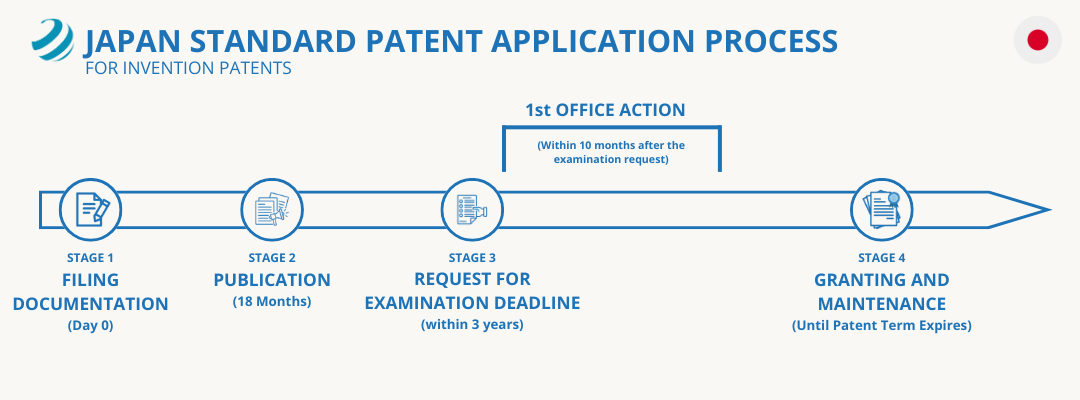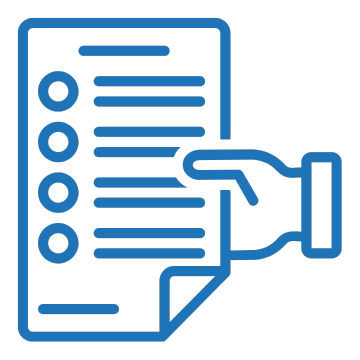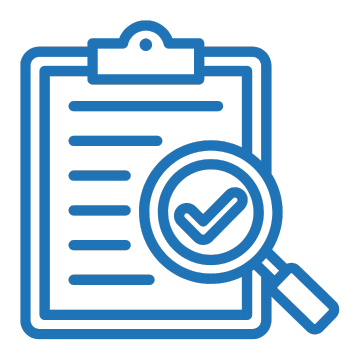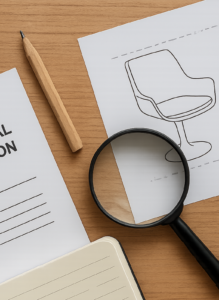Patent Filing in Japan: A Comprehensive Guide to the Japanese Patent Filing Process
Japan is a global leader in innovation and one of the Top 5 largest economies in the world, making it a crucial jurisdiction for protecting intellectual property. Navigating the Japan patent filing process requires understanding the types of protection available and the procedural steps at the Japan Patent Office (JPO). This comprehensive guide explains how to patent in Japan, covering invention patents, utility models, and design registrations, as well as the different filing routes (national applications, PCT national phase in Japan, and Paris Convention route). We also detail JPO procedures from application to grant, patent prosecution and appeals, and unique strategies for success under Japanese patent law.

Why It Is Important to File a Patent in Japan
Filing a patent application in Japan is a strategic move for inventors and companies aiming to protect their innovations in one of the world’s largest and most technologically advanced markets. Japan consistently ranks among the top countries for patent filings.
A Japanese patent secures exclusive rights in an economy known for robust manufacturing and consumer demand, and it can strengthen a company’s position in key industries like electronics, automotive, and chemicals. Additionally, Japanese patents are respected for their strong enforcement and quality examination. The JPO is renowned for granting reliable
patents that are trusted worldwide.
With Japan’s participation in the Patent Cooperation Treaty (PCT) and the Patent Prosecution Highway (PPH) program, obtaining protection in Japan can also streamline patent strategies in other jurisdictions. In short, Japan patent registration is an essential component of any global IP portfolio, ensuring you cover a market of over 125 million consumers and a hub of innovation.
Overview of Patent Types in Japan
Japan’s intellectual property system offers three main forms of protection for new innovations and creations: Patents (for inventions), Utility Model registrations, and Design registrations. Each type has distinct criteria and term lengths:
1. Invention Patents
These are the standard patents for technical inventions, and they provide broad protection for products or processes that are new, involve an inventive step, and are industrially applicable. A patent grants the exclusive right to exploit the invention in Japan.
Patents undergo substantive examination to ensure the invention is novel and non-obvious. Examples of patentable inventions include new machines, chemical compounds, manufacturing processes, and the like. The term of a patent in Japan is 20 years from the filing date.
2. Utility Model Registrations
A utility model in Japan is a form of protection for smaller-scale or incremental inventions, often focusing on the shape or structure of products (sometimes called “petty patents”). Utility models do not cover methods or processes, and only physical products and devices.
The inventive threshold is lower than for patents. While novelty is required, an inventive step (non-obviousness) is not examined at filing. Utility models are registered without substantive examination, as only a formal examination is done, which means they are typically granted much faster than patents. The protection term is 10 years from the filing date (half the term of a patent). Utility models are advantageous for quick and cost-effective protection of modest improvements. However, because they aren’t examined for novelty or inventiveness initially, the patentability and enforceability of a utility model can be uncertain until evaluated. Before enforcement, the holder must obtain a technical evaluation report from the JPO confirming the utility model’s novelty and inventive step.
3. Design Registrations
Designs protect the ornamental or aesthetic aspects of an invention, the shape, pattern, or color of a product, as opposed to its technical function. In Japan, industrial designs are registered after a substantive examination for novelty and creativity in appearance. A design right in Japan has a term of 25 years from the application filing date.
Design protection is important for products where the visual appearance drives market appeal (e.g. consumer products, UI/UX graphics, fashion items). Notably, a design registration does not cover the functional or structural features, those would require a patent or utility model.
Key Insight
Japan offers three distinct routes for protecting innovation: Patents for broad technical inventions (20-year term), Utility Models for quick protection of device improvements (10-year term), and Design Registrations for product aesthetics (25-year term). Understanding these options allows applicants to tailor their IP strategy, securing rigorous patent protection for core innovations, while using utility models or design rights to cover incremental improvements and product designs.
Japan Standard Patent Process Timeline
The path from application to grant involves several stages, and Japan is known for relatively fast examination speeds compared to other major jurisdictions. Here’s a breakdown of the typical timeline and key milestones:

In summary, a standard patent application in Japan takes about 2–3 years from filing to grant if examination is requested promptly and prosecution goes relatively smoothly. This is significantly faster than in some other countries. Of course, complexities like multiple office actions or an appeal can extend the timeline.
Patent Filing Routes in Japan: Direct Filing vs PCT National Phase
When you want to file a patent in Japan, there are multiple routes to consider depending on your situation and international plans. The two primary routes are direct Japanese filing and entering the PCT national phase in Japan.
1. Direct National Filing or Paris Route
Many applicants choose to file a patent in Japan directly, either as a first filing or as a follow-up filing claiming priority from an earlier application in another country. Filing a national patent application in Japan is often termed the Paris Convention route, referencing the international treaty that allows foreign applicants to file in Japan within 12 months of an initial filing abroad while preserving the original priority date (JPO). This route is ideal for applicants who know from the outset that Japan is a target market or for those entering Japan after filing in their home country (without using the PCT).
If you have filed an application in another Paris Convention country (for example, a U.S. provisional or utility patent application, or a European application), you have 12 months from that first filing’s date to apply for a patent in Japan claiming that priority. Japan strictly observes this 12-month window for claiming priority.
The official language for patent filings in Japan is Japanese. However, the JPO does permit filing in a foreign language (such as English) initially, provided that a Japanese translation is submitted within a certain timeframe (JPO). Specifically, for a Paris-route application filed in English, a Japanese translation must be furnished within 16 months from the priority date (or within 2 months of the Japanese filing, if that is later). This means applicants can file quickly in English to meet a deadline, then follow up with a translation.
After filing via the direct route, the next steps (requesting examination, examination process, etc.) follow the standard JPO procedure which we detail in later sections. In summary, the direct Paris Convention route is a straightforward way to apply for a patent in Japan when you’re either filing first in Japan or within a year of an overseas application. It gives you the benefit of Japan’s earlier filing date (or priority date) and positions your application for examination by the JPO once you’re ready to proceed.
2. PCT National Phase Entry
Applicants who file an international patent application under the Patent Cooperation Treaty (PCT) can enter Japan as one of the designated countries. Entering the national phase in Japan via the PCT route is a common strategy to keep options open in multiple countries and defer costs. Japan is a PCT member and a popular choice for national phase entry due to its market importance.
You must enter the national phase in Japan within 30 months from the earliest priority date of the PCT application (WIPO). Missing this deadline can be fatal, though Japan does have a procedure to petition for restoration in limited cases of unintentional delay, if filed within a certain timeframe.
The Japanese national phase application can initially be filed in English or the language of the international application, because the PCT application text is already on file. However, a full Japanese translation of the PCT application must be submitted to the JPO within 2 months of the national phase entry date. Japan, unlike some countries, does not allow you to make substantive claim amendments at the moment of national phase entry beyond what was in the PCT application as published.

Key Insight
Patent Filing Process in Japan
Successfully applying for a patent in Japan involves meeting various formal requirements and observing procedural rules specific to the JPO. Here are the key filing requirements and steps for both direct and PCT national phase applications in Japan.

Applicant Eligibility
Both individuals and companies (domestic or foreign) can file patent applications in Japan. Foreign applicants must appoint a Japanese patent attorney/agent to represent them before the JPO (JPO). The agent will provide a Japanese address for service. It’s not required for the inventor to be named as the applicant, as applicants can be assignees (companies) as long as they have the rights from the inventor. Japan does require identifying the inventor(s) in the application, but an inventor declaration or assignment document isn’t automatically required at filing unless there’s a specific issue. However, it is good practice to have assignments in place, and in some cases the JPO might request proof of assignment if the applicant is not the inventor.

Required Documents
A Japanese patent application must include:
- Request or Application Form: This is a form that includes bibliographic data (applicant name, address, inventor name, title of invention, priority claim details if any, etc.). The form is in Japanese.
- Specification (Description): A thorough description of the invention, disclosing how to make and use it. It should provide enough detail for a person skilled in the art to carry out the invention.
- Claims: One or more claims defining the scope of the invention’s protection. Japan, like most countries, requires the claims to be supported by the description. Multiple dependent claims are allowed (and are common), but each claim (including each dependent claim) incurs additional examination fees.
- Abstract: A brief summary of the invention for publication purposes.
- Drawings: If the invention can be illustrated (apparatus, flowcharts, chemical structures, etc.), drawings should be included. Drawings do not have textual labels except short descriptors, which must be translated.
- Proof of Priority: If you claim priority to a foreign application, the JPO requires proof of that priority. Japan is part of the WIPO DAS system, so if your priority office (e.g., USPTO or EPO) has deposited the priority document, the JPO can retrieve it electronically once provided with the access code. Otherwise, you need to file a certified copy of the priority application. The deadline for submitting this is generally within 16 months from the priority date or within 4 months of the Japanese filing, whichever is later.
- No Power of Attorney at Filing: Uniquely, the JPO does not require a Power of Attorney (POA) to be filed for a new application in ordinary circumstances. When your Japanese patent attorney files the application, they simply indicate they represent you. A POA would only be requested by the JPO in special cases.
Please review the JPO website for more information.

Publication
A Japanese patent application filed directly will be published 18 months after the filing date, or 18 months from the earliest priority date if one is claimed, unless the applicant requests early publication. Publication happens in the JPO’s public database and Official Gazette, disclosing the application to the public (JPO).
For PCT applications, if it was already published by WIPO, which happens at 18 months from priority during the international phase, that serves as the public disclosure. The JPO will still publish a Japanese national phase application entry in its own gazette, usually shortly after entry once the translation is on file, but it’s essentially the same content.

Request for Examination
Filing an application in Japan does not mean it will be examined immediately. Japan has a deferred examination system where a separate request for examination must be filed within 3 years from the filing date (for direct applications) or 3 years from the international filing date for PCT national phase. The examination request requires payment of the examination fee. If no request is filed by the 3-year deadline, the application is deemed withdrawn (abandoned) by law.
This deferred examination system gives applicants flexibility to decide later whether to pursue the application or to wait for more information (market conditions, etc.) before incurring examination costs. Many applicants will file the exam request soon after filing or within a couple of years to get the process moving.

Examination
After the examination is requested, the application enters the examination queue. From here, the timeline and procedures merge with the general patent prosecution in Japan. Typically, within a year of requesting exam, you will receive either a Notice of Allowance (if the examiner found no issues and intends to grant) or, more commonly, an Office Action (Notification of Reasons for Refusal) identifying any grounds of rejection. Common issues cited include lack of novelty or inventive step over prior art, insufficient description or support for the claims, unclear claim language, or attempting to claim non-patentable subject matter.
Upon receiving an Office Action, an applicant typically has 3 months to respond if the correspondence is being sent abroad for foreign applicants. Japanese domestic applicants get 2 months by default. In either case, extensions are available (JPO). During this time, the applicant, through their attorney, will prepare a response which may include amendments to the claims and/or arguments refuting the examiner’s objections. Japan allows claim amendments as long as they don’t introduce new matter and are within the scope of what was originally disclosed. It’s common to amend claims to distinguish over prior art if possible. If the response does not overcome all objections, the examiner may issue additional office actions.

Granting
If the examiner is satisfied, either initially or after seeing your response or amendments, they will issue a Decision of Grant (Notice of Allowance). This indicates the application is allowed and will be granted once you complete some formalities. The notice will list the final allowed claims and requires the applicant to pay the patent registration fee (grant fee) for the first years’ annuities (this corresponds to the annual fees for the first 1-3 years of the patent). This payment is usually due within 30 days of the Notice of Allowance (JPO). Once you pay the fee, the patent is registered, assigned a patent number, and you’ll receive a certificate of patent from the JPO. The grant is then published in the Patent Gazette shortly thereafter.
If the examiner ultimately is not convinced, they will issue a Decision of Refusal or a final rejection. At this stage, the prosecution at the examiner level is closed. However, the applicant has the option to appeal the decision to the JPO’s Trial and Appeal Board. The appeal must be filed within 4 months for foreign applicants (within 3 months for domestic applicants).

Maintenance
After the Granting of the Patent, annual maintenance fees for years 4 and onward have to be paid each year before the corresponding due date. The annual fees increase by year and also depend on the number of claims, so keep claims as focused as needed to manage costs. The term of the patent is usually 20 years from the filing date.
Key Insight
Filing a patent in Japan has its formalities but also convenient flexibilities. Always file a complete application in Japanese or with timely translation and remember to request examination within 3 years from the filing date. Japan’s deferred examination lets you stagger costs, but missing the request deadline will abandon the application. Always ensure you partner with a Japanese patent attorney to handle local requirements, translations, and communications with the JPO. After the request for examination, expect around 10 months to the first exam result, and often 2–3 years total to grant under normal processing.
Strategies and Recommendations for Patent Filing in Japan
Filing and prosecuting patents in Japan can be complex, especially for those unfamiliar with the local rules and language. Below are some strategies and tips to help inventors and IP attorneys optimize outcomes when they apply for a patent in Japan.
1. Patent Prosecution Highway (PPH)
The PPH is a cooperative program between patent offices. If you have an application in Japan and a corresponding application in another PPH participating country (e.g., US, Europe, China, Korea, etc.) that has one or more claims allowed, you can request the JPO to fast-track your Japanese application. To use PPH, the Japanese claims must sufficiently correspond to those allowed abroad. You need to provide the JPO with the relevant work from the other office, such as copies of the allowed claims, search report, and examination results. The JPO will give your application special status and examine it out of turn. According to JPO statistics, applications under PPH have an average first action pendency of around 2–3 months (JPO).
PPH can drastically reduce time to grant, often an application can be allowed in under a year from request. It’s also cost-effective as there’s no extra official fee for a PPH request in Japan. You just need to provide documents, which your attorney can prepare, including translations of the foreign office actions if needed. Japan participates in both bilateral PPH and the Global PPH, so most major jurisdictions’ allowances can be used.
2. Accelerated Examination
Even if you don’t have a foreign allowance, Japan offers an accelerated examination program for applications that qualify. You can petition for accelerated exam if certain conditions are met, such as:
- You, the applicant, are practicing the invention or plan to (e.g., the invention is already in use or will be implemented soon).
- The invention is of a certain type of public interest, like green technologies can sometimes be accelerated.
To request accelerated exam, you file a petition explaining why your case qualifies and often need to submit a prior art search report or comparison with known art (JPO). Essentially, you’re helping the examiner by providing relevant prior art upfront and showing your willingness to move quickly. Under accelerated exam, the average first action pendency is about 2.2–2.3 months. So, it’s nearly as fast as PPH.
3. Divisional Applications
If your invention has multiple facets or you receive an office action indicating lack of unity (multiple inventions), don’t hesitate to file divisional applications. Japan’s divisional rules allow you to pursue those other inventions separately, which can later prove valuable. Even if unity isn’t at issue, some applicants file a divisional just before grant of the parent case in order to keep an application family pending. This can be a strategy if you want to potentially get broader claims later or cover an improvement.
Bear in mind divisional filings must be done while the parent is pending (e.g., with an office action response or within the time allowed after final decision). Divisional applications carry the cost of a new application (filing fee, etc.) and will need a separate examination request, but they can significantly broaden your protection in the long run.
4. Leverage the Grace Period if Needed
Japan’s patent law provides a 12-month grace period for disclosures by the inventor (or applicant). This means if you accidentally disclosed your invention, for example, via a publication or at a trade show, within one year prior to filing in Japan, you may still be able to get a patent if you declare the disclosure and meet the requirements of the grace period law. However, relying on grace periods can be risky, and you must prove your disclosure fits the allowed criteria, and any third-party disclosures are still disqualifying. Best practice is to file before any public disclosure, using the grace period only as a safety net.
Key Insight
To succeed in Japan’s patent system, prepare thoroughly and act strategically. File early and translate well, track all deadlines, especially the 3-year exam request, and use tools like PPH or acceleration to your advantage. Engaging an experienced local patent attorney and staying proactive will greatly enhance your chances of obtaining valuable patent rights in Japan’s competitive landscape.
Strengthen Your Global IP Strategy with a Japanese Patent
Securing a Japanese patent is more than just local protection, it’s a cornerstone of a strong global IP portfolio. Japan’s rigorous JPO patent procedure ensures that granted patents are recognized worldwide for their quality and reliability.
For companies expanding in Asia, a Japan patent registration not only safeguards innovation in one of the world’s most advanced markets but also reinforces credibility when pursuing protection in other jurisdictions. Whether filed directly or through the PCT national phase in Japan, a Japanese patent enhances licensing opportunities, deters competitors, and adds substantial value to your international patent assets.

Get your Patent Filed in Japan
Contact us today for a free consultation



